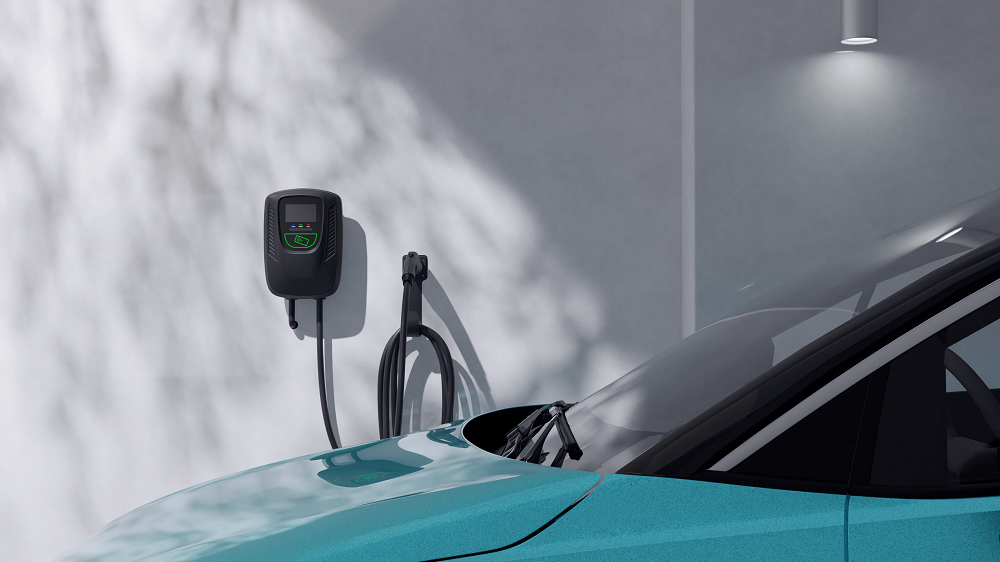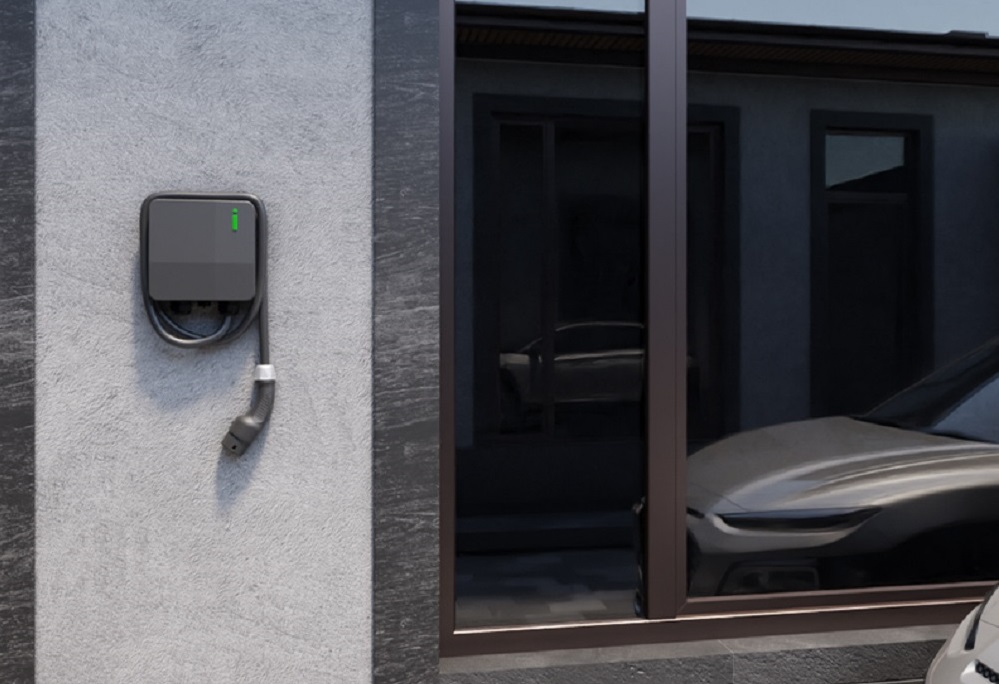
The recent rise in the popularity of electric vehicles (EVs) has highlighted the important role of EV chargers in clean mobility. As one of the key components of EVs, EV chargers are becoming increasingly recognized by the general public. This blog aims to provide you with the basics of EV chargers, covering EV charger specifications, charging speeds, accessory and connector types, and key terms, as well as answering the question "Is fast charging bad for electrics? We hope this blog will help you better utilize and understand electric vehicle chargers.
What is an electric vehicle charger?
EV chargers are the backbone of the EV charging infrastructure, helping to replenish the car's battery and extend its driving range. Due to different standards and EV charger producers in each region, there are different types and configurations of EV chargers to cater to different charging needs and scenarios, helping to seamlessly integrate EVs into people's daily lives.
An electric vehicle charging station refers to all the facilities for electric vehicle charging equipment, this includes home chargers, public charging stations, and a variety of other mobile devices that provide electricity to electric vehicles. In order to make EV charging services available to EV owners at their destinations, governments and companies are installing EV chargers at destinations where EVs are primarily located, i.e., destination EV chargers, such as hotels, shopping malls, restaurants, and so on. Destination charging helps to increase the convenience of charging for EV owners while also increasing the attractiveness of these locations.
What are the types of EV chargers?
EV chargers are mainly categorized into Level 1 EV chargers, Level 2 EV chargers, and Level 3 EV chargers.
Level 1 Electric Vehicle Charger (AC Charger):
EV chargers are mainly categorized into Level 1 EV chargers, Level 2 EV chargers, and Level 3 EV chargers. speed of 3 to 5 miles per hour at 120 V. Despite the longer charging time, which can take about 8 to 12 hours, Level 1 chargers are suitable for the average home environment, with easy charging via a connecting to a traditional household outlet.
Level 2 EV charger (AC charger):
The Level 2 EV charger has a charging speed of 15 to 25 miles per hour and a power rating of 240 V. A 60kWh capacity EV, for example, can be fully charged in 4 to 6 hours under ideal conditions. This charger is more suitable for home use and offers users a more flexible and convenient charging option.
Level 3 EV charger (DC fast charger):
Level 3 EV chargers can reach power levels of 100kW or more, and can fully charge a 60kWh EV in 30 minutes to 1 hour, which is 20 times faster than a Level 1 charger and 4 times faster than a Level 2 charger. However, DC EV chargers range in price from $10,000 to $50,000, are more complex to install, and are typically used in commercial EV charging solutions for applications such as commercial car parks and gas stations where fast charging is required.

Does DC fast charging damage EV batteries?
Will fast charging affect the life of an electric vehicle battery? The answer is yes, but this damage is very minor.
This is a common question, and I've looked up a lot of information to clear up this confusion. Here's a specific analysis of the answer.
There are many factors that affect an EV battery, temperature, number of charges, battery capacity, battery charge remaining, etc. The effect of fast charging on EV battery life is a complex issue. Although DC fast charging can quickly replenish battery energy in a short period of time, this type of charging may have some effects on the battery.
Understanding DC fast charging curves:
DC fast charging is usually performed at higher power, and the charging curve shows that the charging rate rises quickly at the beginning and then slows down gradually (at 80%-100%, the charging rate decreases). During high-power charging (at 20%-80%, during the fast charging period), the battery will generate some heat.
There are many factors that affect an EV battery, temperature, number of charges, battery capacity, battery charge remaining, etc. The effect of fast charging on EV battery life is a complex issue. Although DC fast charging can quickly replenish battery energy in a short period of time, this type of charging may have some effects on the battery.
Deep Cycle Battery:
An excessive number of deep charge and discharge cycles may shorten battery life. Battery cycle life is usually related to the number of charge and discharge cycles, and deep battery cycling can increase these cycles, resulting in a gradual decline in battery performance. At the same time, the heat generated by the battery during deep charging and discharging will increase, which may lead to an increase in battery temperature, thus affecting the stability and safety of the battery. As the number of charge cycles increases, the performance of the battery will gradually decay, including capacity decay and increased internal resistance.
Battery over-discharge and recharge:
Over-discharging increases the internal resistance of the battery, causing the battery to generate more heat during discharge, which further damages the battery and leads to irreversible changes in the chemical reactions in the battery, damaging the chemical structure of the battery. This may result in damage to the electrode materials and a decrease in battery performance, affecting the battery's range. In addition, both overcharging and discharging may cause the battery to produce excessive gases and heat, which can lead to safety issues or even cause the battery to explode. For this reason, modern EV batteries are often equipped with a Battery Management System (BMS) to monitor and control the charging process to prevent overcharging.
Battery Life:
One reason why rapid charging may lead to battery deterioration is the heat generated during rapid charging, which may cause uneven deterioration of the electrodes and electrolyte. In order to control the temperature of the battery, manufacturers often implement temperature control through the Battery Management System, which adjusts the charging rate to maintain the proper temperature, thus mitigating the effects of heat on the battery.
What are the EV charger accessories?
Adapters and cables:
Adapters and cables play a vital role in connecting the charger to the EV. They provide a seamless charging experience and include emergency cables to ensure that users can charge safely in any situation.
Electric Vehicle Charger Adapters:
Electric vehicle charger adapters are designed as accessories to facilitate the connection between electric vehicles (EVs) and various charging stations. There are many types of EV adapters due to the different standards used in each region, but they all ensure compatibility between different charging standards and connector types. Here are a few common types of EV charger adapters:
1.Type 1 and Type 2 adapters:Type 1 (SAE J1772) and Type 2 (IEC 62196) are two different EV connector standards, where a Type 1 EV (common in North America and Japan) connects to a Type 2 charging station (common in Europe.) SAE J1772 is used primarily in North America and some Asian countries. It is usually a rectangular plug with a few pins for low to medium power AC charging, suitable for home charging and public charging posts.
IEC 62196 is generally used by countries in Europe. The type 2 connector is a round plug with a higher charging power capability, therefore, the type 2 connector is suitable for AC charging and DC fast charging at various power levels, e.g., for home charging, public charging stations, and fast charging stations.
2.CHAdeMO adapter:CHAdeMO is a fast charging standard adopted mainly by Japanese automakers and is used by some EVs such as the Nissan Leaf and Tesla (via adapters).
3.CCS Adapter:CCS (Combined Charging System) is a charging standard widely used in Europe and North America that integrates AC and DC charging capabilities to enable fast charging at higher power.CCS adapters are adopted by many automakers, such as Volkswagen, BMW, and Ford.
EV Charger Bracket or Pedestal:
To improve the stability and safety, EV charger stand or pedestal is an integral part of the EV charger, especially in public charging places, you can often see the EV charger is mounted on a pedestal. In order to make the electric car charger mounted on a pedestal more beautiful, the electric car charger manufacturer will design the cable management.
EV Charging Gun:
An electric car charging gun is a device that connects an electric car charging port to a charging post, usually a flexible cable with a connector and grip. The purpose of the charging gun is to provide power transfer and data communication while charging an electric vehicle, acting as a physical interface during the charging process. Sometimes you will find an EV charger with two charging guns, such an EV charger is called a dual port EV charger or twin EV charger, which can charge two EVs at the same time.

Key terms related to EV chargers
Electric Vehicle Service Equipment (EVSE):
EVSE is a key component of the EV charging ecosystem and includes equipment such as chargers, connectors, and cables. Its role is to provide power transfer and management to ensure that EVs can be charged efficiently.EVSE comes in many forms in different scenarios, including home charging posts and public charging stations.
Electric Vehicle Service Providers (EVSPs):
EVSPs are companies or organisations that provide charging services to electric vehicle users. They manage and maintain a network of charging stations to provide users with a convenient and reliable charging experience and promote the sustainable development of electric mobility.
DC Fast Charging (DCFC):
DCFC is a high power, short time fast charging technology that uses DC current to charge batteries. Typically used in commercial charging stations, this type of charging can significantly reduce charging times and increase the utility of electric vehicles over long distances. Despite its efficiency, it may have some impact on battery life in some cases and therefore needs to be used with caution.
Conclusion
Electric vehicles, as environmentally friendly modes of transport, are one of the key factors in energy sustainability. With EV charging solutions facilitating the future of mobility, having a comprehensive guide ensures that users are able to make informed decisions about their charging needs. Stay tuned for the evolving future of EV charging technology.
In an age where electric vehicles are rapidly changing the way we travel, a thorough understanding of EV chargers is especially important. This comprehensive guide hopes to provide readers with a thorough insight into the types of EV chargers, charging speeds, accessories and connector types. By taking an in-depth look at the features of Level 1, Level 2 and Level 3 EV chargers, it will help coy computer car owners to choose the right charging solution for their needs.
The development of EV chargers is a continuously advancing technological process. Through the joint cooperation between the government and EV charger manufacturers, EV charging network operators, EV charging electricity operators and other enterprises, we will build a smarter, more efficient and sustainable electric mobility ecosystem, and contribute to the sustainable development of the planet.
Post time: Jan-03-2024
